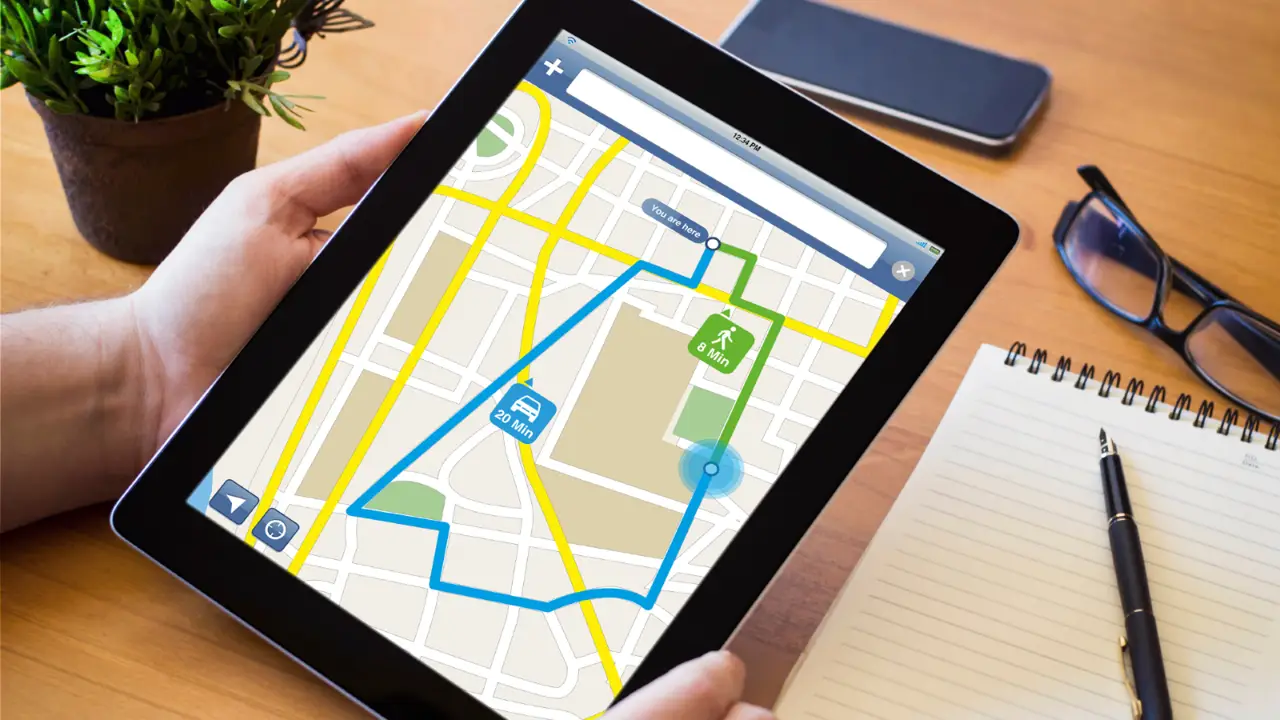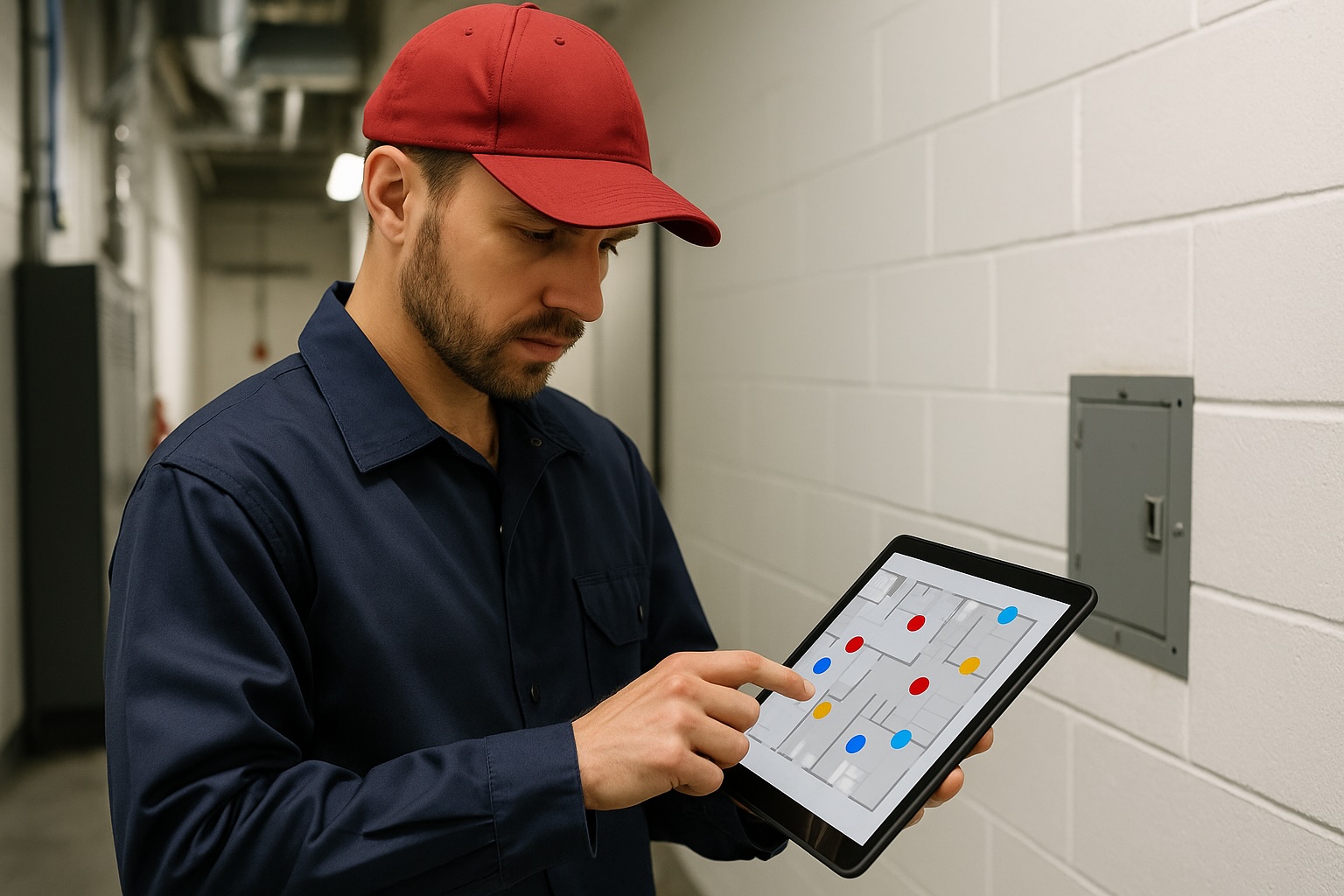This optimization allows you to organize your travel more smoothly, reducing unnecessary trips and maximizing your teams’ productivity. With Cadulis, this goal becomes easily achievable thanks to intelligent features that simplify every step of field service management.
Technique 1: Plan routes based on data
Effective planning is the key to optimized routes. Instead of relying on fixed schedules or standard routes, use real-time data and analytics to adjust your rounds.
Cadulis offers data collection and analysis tools. This allows you to create tailored routes based on traffic conditions, distances between jobs, and emergency priorities.
-
- Route and history analysis: By analyzing past rounds, you can identify recurring slowdowns or routes that are not optimal. Cadulis allows you to continuously adjust these routes to minimize downtime.
-
- Smart prioritization: Use the scheduling assistant in Cadulis to automate the allocation of jobs based on specific criteria such as urgency, distance, or task complexity.
Thanks to this data-driven approach, you optimize every stage of your routes. You improve productivity while reducing travel-related costs.
Technique 2: Prioritize nearby service areas
Grouping your jobs by geographic area is a simple but powerful technique. By reducing the distance between two appointments, you can save fuel and increase the number of daily visits per technician or delivery driver. Cadulis makes this sectorization easy with mapping and zone management tools.
-
- Geolocation: Cadulis relies on the geolocation of your job sites and your field workers.
-
- Intra-zone route optimization: For dense areas, Cadulis offers optimized routes within each sector.
Result: fewer kilometers traveled each day and a significant reduction in logistics costs.
Technique 3: Integrate connected devices for greater accuracy
The Internet of Things (IoT) and connected devices are transforming route management. With Cadulis, you can integrate devices such as GPS, vehicle tracking sensors, or connected communication tools to get a real-time overview.
-
- Live GPS vehicle tracking: Thanks to GPS system integration, you can track each vehicle in real time, identify potential delays, and adjust routes based on traffic conditions or unexpected emergencies.
-
- Real-time visual assistance with Speakylink: Speakylink lets you launch visual assistance from Cadulis to share media in real time with your customers or field workers. This allows you to solve problems more efficiently without travel, while automatically recording media for better traceability.
-
- Predictive maintenance: Sensors integrated into equipment can also signal potential failures before they occur. Teams can schedule interventions before the problem becomes critical.
This connected approach increases accuracy, ensures more efficient routes, and reduces the risk of unexpected events.
Technique 4: Encourage flexibility in managing unforeseen events
Unforeseen events—whether a customer cancels an appointment at the last minute or an unexpected emergency occurs—are part of daily business reality. One of Cadulis’s strengths is its ability to handle these changes in real time.
-
- Dynamic reassignment of tasks: If a job is cancelled or a technician is ahead of schedule, Cadulis allows you to instantly reassign other tasks to fill those available slots. The tool takes into account the current location of the team, task priorities, and the estimated duration of each job to suggest the best solution.
-
- Real-time route modifications: Integration with navigation systems allows routes to be automatically adjusted whenever changes are made. Teams avoid unnecessary trips to the office or wasting time manually recalculating their journeys.
This flexibility maximizes the use of your teams’ working time and improves overall productivity, even when unexpected events occur.
Technique 5: Continuously measure and adjust your performance
Cadulis offers a suite of analytical tools that allow you to continuously measure the performance of your rounds and your teams.
-
- Monitoring key performance indicators (KPIs): Cadulis provides customizable dashboards that let you track essential KPIs in real time, such as distance traveled, number of jobs completed, or customer satisfaction rate.
-
- Automated reports: By generating regular reports on rounds and interventions, you get an overview of areas for improvement, such as reducing waiting times between jobs or optimizing task distribution among teams.
By leveraging this data, you can continuously adjust your strategies to ensure sustainable optimization of your rounds.
Optimizing your rounds is not just a matter of kilometers. It’s a smart way to rethink your processes for greater efficiency and responsiveness. With Cadulis, field service management becomes smoother and more efficient, thanks to tools that adapt to your needs in real time. Choosing Cadulis means opting for better resource management, a more agile organization, and a more efficient business.







